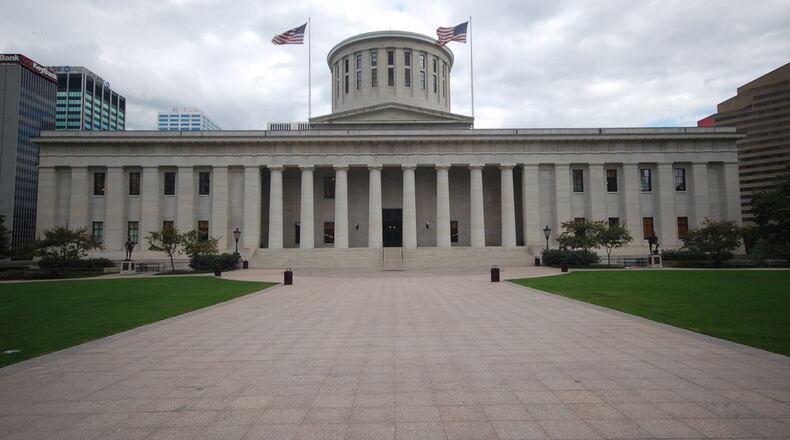The seven-member Ohio Redistricting Commission is co-chaired by state House Speaker Robert Cupp, R–Lima, and state Sen. Vernon Sykes, D–Akron. Its other members are Gov. Mike DeWine; state Auditor Keith Faber; Ohio Secretary of State Frank LaRose; Ohio Senate President Matt Huffman, R–Lima; and House Minority Leader Emilia Sykes, D–Akron, daughter of Vernon Sykes.
They are tasked with drawing new maps, based on 2020 census data, for Ohio’s 99 state House and 33 state Senate districts.
The commission agreed to hold nine public hearings across the state. Two took place Monday in Cleveland and Youngstown. Following the Tuesday morning meeting in Dayton, the other meetings are:
· 2:30 p.m. Tuesday at the University of Cincinnati.
· 9:30 a.m. Wednesday, Aug. 25, at Ohio University in Zanesville.
· 2:30 p.m. Wednesday at Rio Grande Community College.
· 9:30 a.m. Thursday, Aug. 26, at Ohio State University in Lima.
· 2:30 p.m. Thursday at the University of Toledo.
· 9:30 a.m. Friday, Aug. 27, at the University of Akron.
· 2:30 p.m. Friday at Ohio State University in Mansfield.
Voters approved a constitutional amendment in 2015 to create the bipartisan state legislative redistricting commission. Reflecting state government’s current makeup, the Ohio Redistricting Commission has five Republican and two Democratic members.
If at least two commissioners from each major political party vote to approve a map, it’s valid for 10 years. If a map passes on partisan lines, it’s only good for four years.
In 2018, voters approved a state constitutional amendment on congressional redistricting. It says a three-fifths majority of the state legislature can adopt a new congressional district map, if that includes at least half of the minority party’s members.
If the General Assembly can’t agree on a map, a separate seven-member commission of state officials — including at least two members of the minority party — would try to do so. If that commission can’t agree, the General Assembly could try again, this time needing a three-fifths majority, including one-third of the minority party’s members.
Any of those maps would be valid for a decade. But if all those efforts fail, the majority party alone could pass a map that would be valid for four years.
The state legislative map must be completed by Sept. 15 at the latest, and the congressional map by Sept. 30. If a congressional map isn’t done by then, the redistricting commission has until Oct. 31 to draw one. If it can’t agree on a map by then, the General Assembly has until Nov. 30 to draw one.
About the Author

